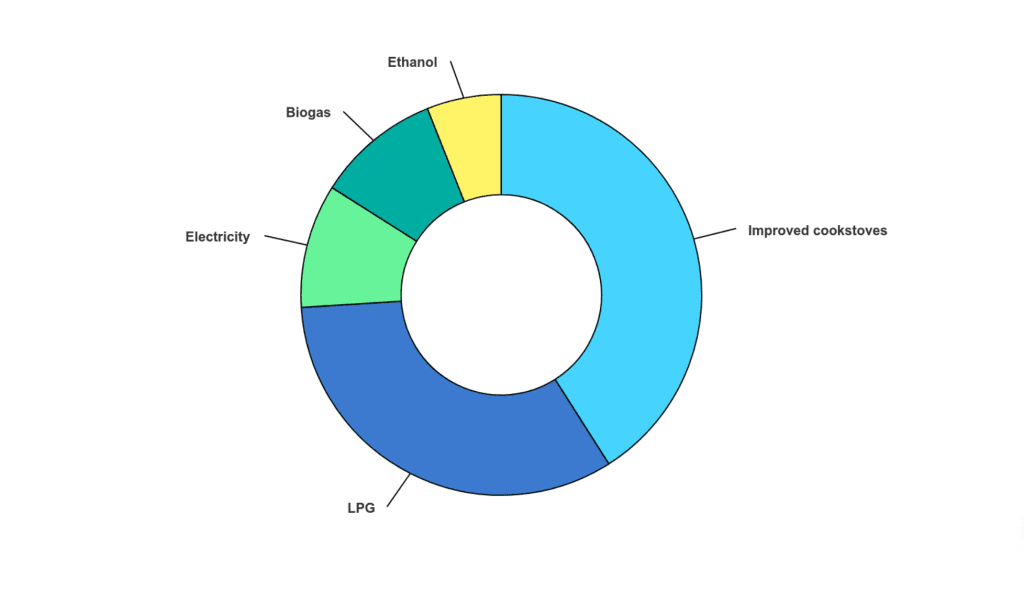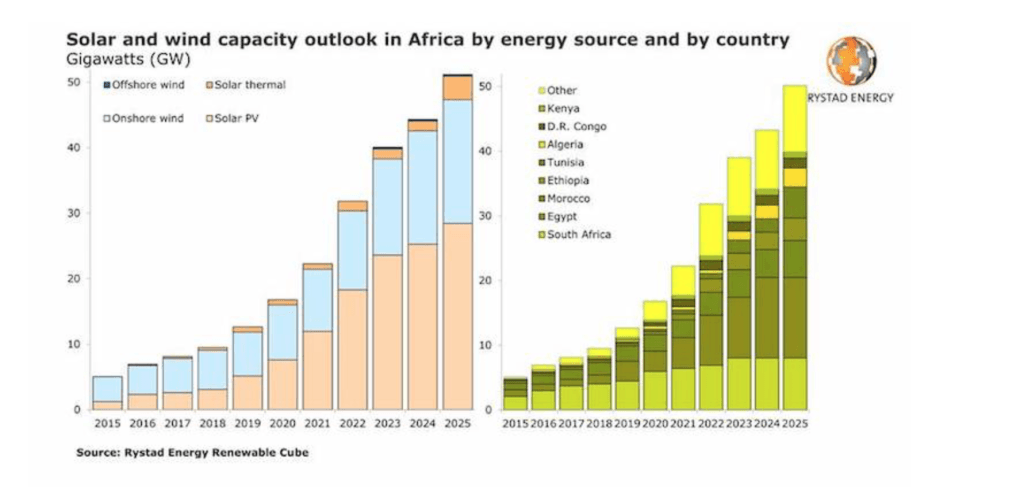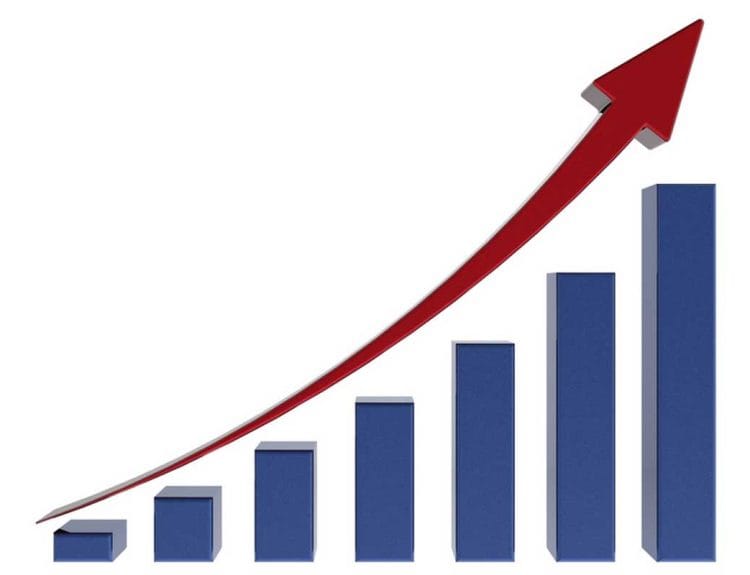Africa demonstrates strong leadership in renewable energy. In 2021, 55.5% of its final energy consumption came from renewable sources, outpacing Europe, North America, and Asia.
The African continent holds 30% of the world's essential minerals for renewable technologies and 60% of the planet's best solar resources.
Deep Dive!
Africa is positioning itself as a key player in the global renewable energy sector, leveraging its natural wealth to diversify its energy mix and combat climate change. Although 12 African countries have already committed to carbon neutrality, universal access to energy remains a major challenge: 600 million people still lack electricity. Achieving this goal by 2030 requires tripling the current rate of connections, with solutions such as national grids, mini-grids, and solar systems. Some countries, like Ghana, Kenya, and Rwanda, are leading the way. The article highlights the top 10 African countries advancing in green innovation in 2025.

Here are the top 10 African countries leading in renewable energy and green innovation in 2025. Check them out!
10. Zimbabwe
Zimbabwe is accelerating its renewable energy efforts, focusing on solar, wind, and hydropower to overcome energy shortages and environmental challenges.
Key Projects:
- Gwanda Solar Power PlantWith a capacity of 100 MW, this solar project is helping to meet the country’s energy demand and reduce its carbon footprint.
- Kariba Hydropower PlantThe Kariba Dam remains a major source of renewable energy, and Zimbabwe is working on its modernization and expansion.
- Solar Irrigation ProjectsThe government supports solar-powered irrigation systems for agriculture, promoting sustainable farming practices.
Rwanda
Rwanda is a leader in the transition to renewable energy in East Africa, with an ambitious agenda focused on solar and hydroelectric power.
Key Projects:
- Gisagara Solar Power PlantA 10 MW solar facility that significantly contributes to the country's renewable capacity.
- Kivu-Watt Methane Gas ProjectThis innovative project harnesses methane gas from Lake Kivu to generate clean and renewable electricity.
- Off-Grid Solar SolutionsRwanda is at the forefront of off-grid solar initiatives to electrify rural communities.
8. Tunisia
Tunisia is making significant progress in solar and wind energy, demonstrating its commitment to sustainable development and energy independence.
Key Projects:
- Tozeur Solar Power PlantThis 10 MW solar plant is part of the national strategy to generate 30% of its electricity from renewable sources by 2030.
- Wind Energy DevelopmentTunisia is expanding its wind capacity with several large-scale wind farms in development.
- Energy efficiencyEnergy efficiency measures have been implemented in both urban and rural areas, including building codes and energy-saving programs.
7. Nigeria
Nigeria, Africa’s largest economy, has been slow to move away from fossil fuels, but it is showing promising signs of investment in renewable energy, especially in solar power and mini-grid solutions.
Key Projects:
- Nigerian Solar Program: Multiple solar initiatives have been launched, including the Solar Home System program, which aims to provide off-grid solar solutions to rural communities.
- Renewable Energy Micro-Grids: The country is developing renewable energy micro-grids to address electricity shortages in rural and underserved areas.
- Hydropower Projects: Nigeria is also working to strengthen its hydropower capacity, with ongoing projects like the Zungeru Hydropower Plant.
6. Ghana
Ghana leads the green energy revolution in West Africa, combining its existing hydroelectric resources with major investments in solar energy and energy efficiency.
Key Projects:
- Bui Hydroelectric Power PlantWith a capacity of 400 MW, this plant is a key pillar of Ghana's renewable strategy.
- Solar Initiatives: Ghana has invested in numerous solar projects, such as the 20 MW Nzema Solar Power Plant, one of the largest in the region.
- Energy Efficiency Programs: The government promotes energy-saving technologies and sustainable buildings to reduce consumption.

5. Ethiopia:
Ethiopia is rapidly establishing itself as a leader in renewable energy, particularly in hydropower. Its abundant natural resources make it one of the most promising markets for green energy in Africa.
Key Projects:
- Grand Ethiopian Renaissance Dam (GERD): This 6,450 MW hydroelectric project will significantly boost the country's renewable energy generation and promote regional energy trade.
- Geothermal Energy: Ethiopia is expanding its geothermal potential with projects like the Aluto Langano geothermal plant, which increases clean energy production.
- Wind and solar energy projects: The country is also investing in wind and solar energy, such as the Ashegoda Wind Farm with a capacity of 120 MW.
4. Egypt:
Egypt has been expanding its renewable energy capacity through ambitious projects and investments, especially in solar and wind energy. Its strategic location, abundant solar radiation, and extensive coastline for wind energy make it favorable.
Key Projects:
- Benban Solar Park: This 1.65 GW solar park in Aswan is one of the largest in the world and is part of Egypt's plan to generate 42% of its electricity from renewable sources by 2035.
- The Gabal El-Zeit wind farm: Located on the Red Sea coast, this wind farm contributes 580 MW to the grid, with expansion plans to reach 2,000 MW.
- Green Hydrogen Development: Egypt has signed agreements with international partners to establish a green hydrogen hub, leveraging its solar and wind potential.
3. Kenya :
Kenya is a renewable energy powerhouse in East Africa, known for its advancements in geothermal energy. Its focus on clean energy has positioned it as a regional leader.
Key Projects:
- Olkaria Geothermal Power Plant: Kenya is home to the largest geothermal plant in Africa. The Olkaria complex contributes over 700 MW to the national grid, accounting for nearly 50% of the country's electricity.
- Lake Turkana Wind Power Project: With 310 MW, it is the largest wind farm in Africa and has transformed Kenya's energy landscape.
- Solar and Mini-Grid Innovations Kenya has made significant investments in off-grid solar energy and mini-grids to electrify rural areas.
2. South Africa:
South Africa, the most industrialized country on the continent, is making progress in renewable energy despite its heavy reliance on coal. It has made notable advances in wind, solar, and biomass energy.
Key Projects:
- REIPPPP (Renewable Energy Independent Power Producer Procurement Programme): This program has been crucial in bringing renewable energy projects to life, with over 6,000 MW of renewable capacity added since its inception.This program has been crucial for implementing renewable energy projects, adding over 6,000 MW of capacity since its inception.
- Kusile and Medupi Power Plants: Although coal-based, they are being upgraded to incorporate renewable technologies. Investments are also being made in offshore wind farms along the coast.
- Green Hydrogen Hub: South Africa is emerging as a leader in green hydrogen production, with ongoing projects in the Northern Cape to produce clean hydrogen from solar and wind energy.
1. Morocco
Morocco has established itself as Africa's leader in renewable energy due to its bold commitment to sustainability and climate action. Its strategic location and abundant solar and wind resources have made it a global benchmark.
Key Projects:
- Noor Ouarzazate Solar Complex: One of the largest concentrated solar power plants in the world, with a capacity of 580 MW, is key to the country’s energy transition.
- Wind Energy Projects: Morocco is developing several wind farms, including the Tarfaya wind farm (850 MW), one of the largest in Africa. Its goal is to generate 52% of its energy from renewable sources by 2030.
- Green Hydrogen Initiatives: Morocco is betting on green hydrogen as part of its energy strategy, with several projects under development to export clean energy to Europe.
Source of the article: africanexponent






